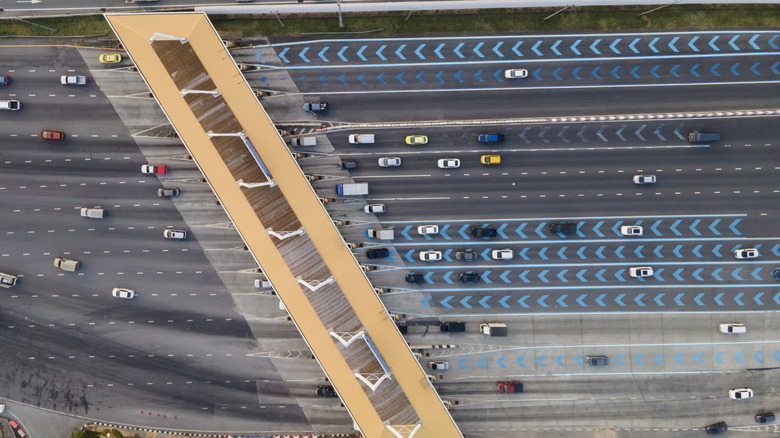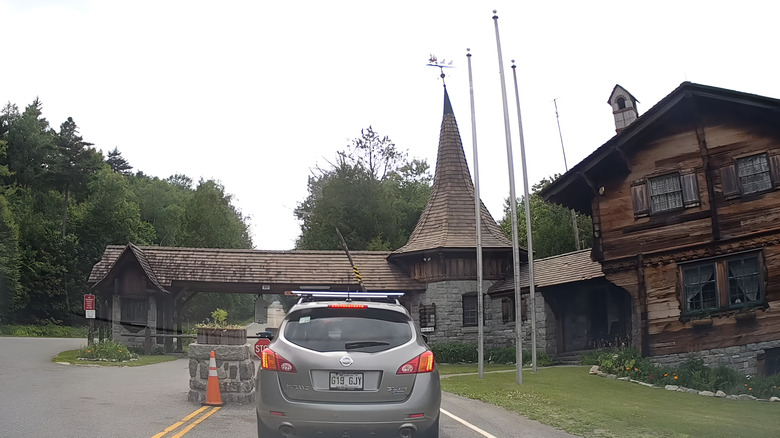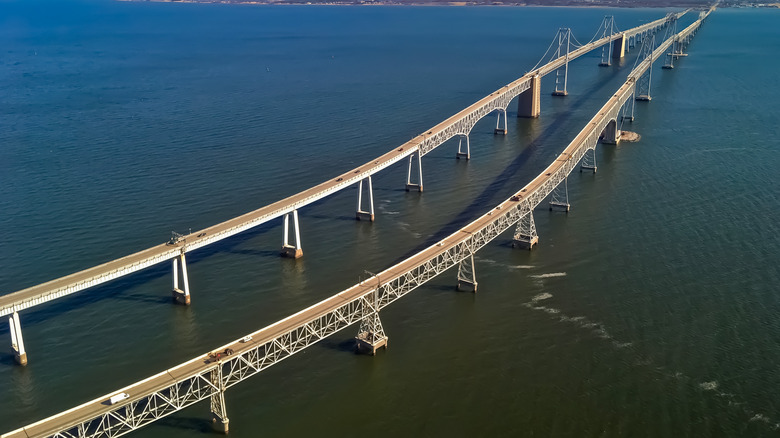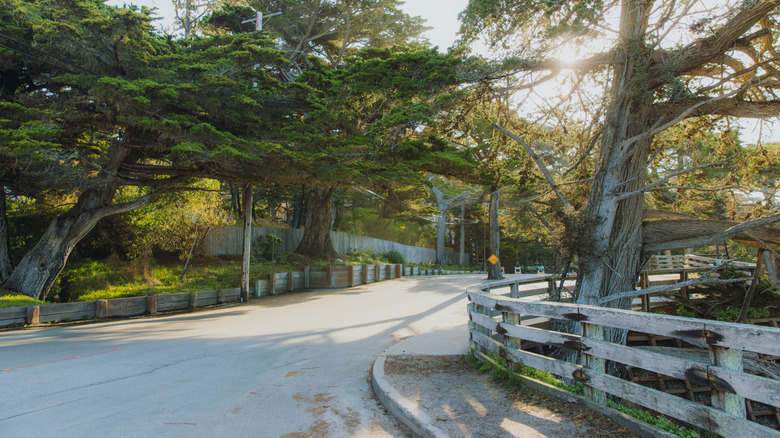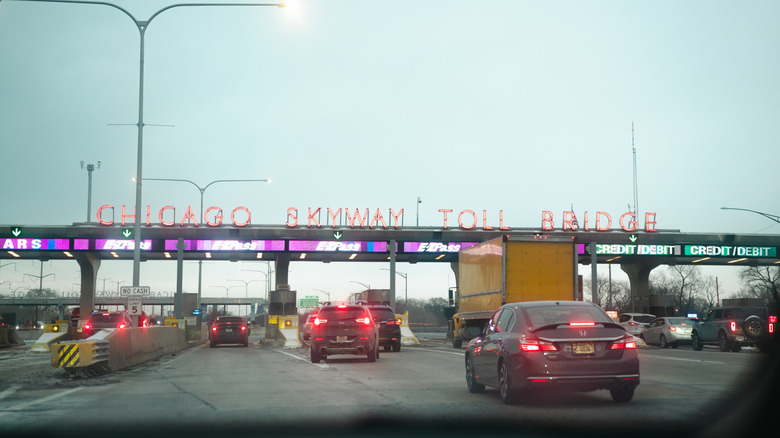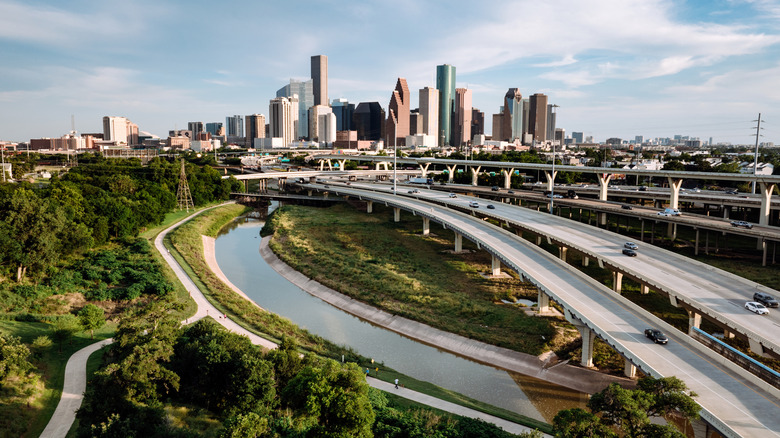The Most Expensive Toll Roads In America (And How To Avoid Them)
As of mid-June, 2024, Whiteface Mountain Veterans Memorial Highway (New York), Chesapeake Expressway (Virginia), 17-Mile Drive (California), Chicago Skyway (Illinois), and Fort Bend Parkway (Texas) were the most expensive toll roads in America. This list is based on a 2024 report by GOBankingRates, which sourced data from CarInsurance.org and EZ Freight Factoring. These top five roads charge between 51 cents and $1.25 per mile. While 51 cents might not sound like much, it's significantly higher than what most drivers pay for other routes.
According to the Federal Highway Administration's Pricing Kit, toll lanes across the country average about 10 cents per mile as of 2025, with 65% of all toll road traffic falling between 0 and 25 cents per mile and only 5% charging over 50 cents. As of mid-July 2025, the United States Energy Information Administration says gas averages $3.121 per gallon for regular gasoline, which works out to 10.5 cents per mile for a car that gets 30 miles per gallon. This means that 51 cents is more than both the national average and the cost of fuel. Before you pay a toll, check other cheaper routes or alternative options, especially since you may not know how to save money on gas or you might regularly make driving mistakes that cost you at the gas pump.
Whiteface Mountain Veterans Memorial Highway (New York)
The Whiteface Mountain Veterans Memorial Highway in New York is an 8-mile-long state road, and a regular car pays $25 at the gate. This breaks down to $3.14 per mile. One family in a single car can spend $90 or more for a round trip once you add extra passenger fees ($25 for the driver plus $20 for the 2nd passenger, and $10 for each additional passenger). Cyclists pay $15 per bike, while motorcycles are charged $25 with the same extra-person fee as cars.
To avoid these fees, invest in New York's Empire Pass. For $80 per year, the pass covers passenger vehicles on all DEC-managed scenic highways and day-use areas, including the Veterans Memorial Highway. Local residents, active duty military members, and holders of the Lake Placid Legacy Sites Passport also qualify for free or heavily discounted entry. Veterans and military personnel pay $10 per vehicle, while Legacy Sites pass-holders enjoy unlimited, toll-free access all season long. Contact the Lake Placid Olympic Regional Development Authority to apply for a Legacy Sites Passport.
Chesapeake Expressway (Virginia)
At the Chesapeake Expressway, two-axle passenger vehicles pay $9 per trip on summer weekends – from Memorial Day through Labor Day — and $4.00 during the rest of the year. This works out to $1.29 per mile or 57 cents per mile for the 7-mile route. That summer rate makes it more expensive than most other toll roads, meaning drivers heading to beach locations, or even local commuters using SR-168, pay a noticeably higher cost per mile.
To skip the Chesapeake Expressway toll, exit at 8B for Hillcrest Parkway and turn onto Battlefield Boulevard, also called SR 168 Business. This free four-lane road runs next to the expressway for about seven miles. This detour adds 15 to 20 minutes, but lets you avoid paying the toll. If you need to use the Expressway often, the Chesapeake Expressway Discount Program can help you save. When you register your E-ZPass, you'll only pay $1.00 per two-axle trip, or 14 cents per mile, all year. Even if you don't have an E-ZPass, driving on weekdays or during non-holiday times can similarly help you save since you'll pay the lower $4.00 rate.
17-Mile Drive, Pebble Beach (California)
At the 17-Mile Drive toll road, a regular car pays $12.25 to complete the 17-mile route, which comes to about 72 cents per mile. You can enter through any of the five gates, which operate daily from sunrise to sunset. Tour buses are charged $6 per passenger, while overnight guests at Pebble Beach Resorts get in for free. You can get the $12.25 toll back if you spend at least $35 at any Pebble Beach Resorts' restaurant, except Pebble Beach Market. Just show your receipt at the gate, and they'll credit the fee.
Cyclists don't pay at all, with no permit or registration needed, so you can bike the full route without stopping at any toll gate. If you want ocean views without the toll, stick to California's public highways. Caltrans' official toll schedule list bridges and specific toll roads, like the Golden Gate and Bay Area crossings, but don't mention Highway 68 or Highway 1, confirming both are toll-free routes that can get you to the same destination without the extra cost.
Chicago Skyway (Illinois)
If you're relocating to Joliet, Illinois, one of the most affordable place to live in 2025, you might cross the Chicago Skyway when you swing north through Chicago toward Indiana. It covers 7.8 miles between the Dan Ryan Expressway (I-94) and the Indiana Toll Road (I-90) and, since January 2025, drivers have paid a flat $7.80, or $1 per mile. There's no discount for nights or weekends, no reduced rates for using a transponder, and no peak-hour pricing. To skip the Chicago Skyway toll, stay on I-94 southbound through the Dan Ryan and Bishop Ford, then merge onto the I-80/94 (Borman Expressway) once you reach Indiana. These routes are toll free and don't show up on the Illinois Tollway's system map.
When traffic builds up, consider taking the train instead of driving can also save money on tolls and parking. The South Shore Line runs out of Chicago's Millennium Station. As of July 2025, a one-way South Shore Line fare from Millennium Station is $7.00 in Zone 1 and $6.25 in Zone 2. If you're heading farther out, tickets cost $7.75 to Hammond Gateway and $7.50 to East Chicago. Bicycles ride free year-round on the South Shore Line and are allowed on designated bike trains, as long as there is rack space available.
Fort Bend Parkway (Texas)
Fort Bend Parkway's southbound stretch. from Beltway 8 to Sienna Parkway, covers 6.2 miles and includes four toll points: Fondren (75 cents), McHard (50 cents), Lake Olympia (50 cents), and Sienna (50 cents). A two-axle car with an electronic tag pays $2.25 total, which equals about 36 cents per mile. The toll rate is fixed all day, with no discounts for nights or weekends.
To reduce the toll, use Fort Bend County Toll Road Authority's trip-builder map to see where each toll plaza starts. If you exit the parkway before reaching a toll point, and rejoin after, you'll only be charged for the segments you use. This can cut your cost from $2.25 to just 50 cents or 75 cents. If you're driving on the Harris County Toll Road Authority-controlled extension, using an EZ Tag gives you a built-in discount — a $1.50 toll instead of $1.75 at the main gate.
